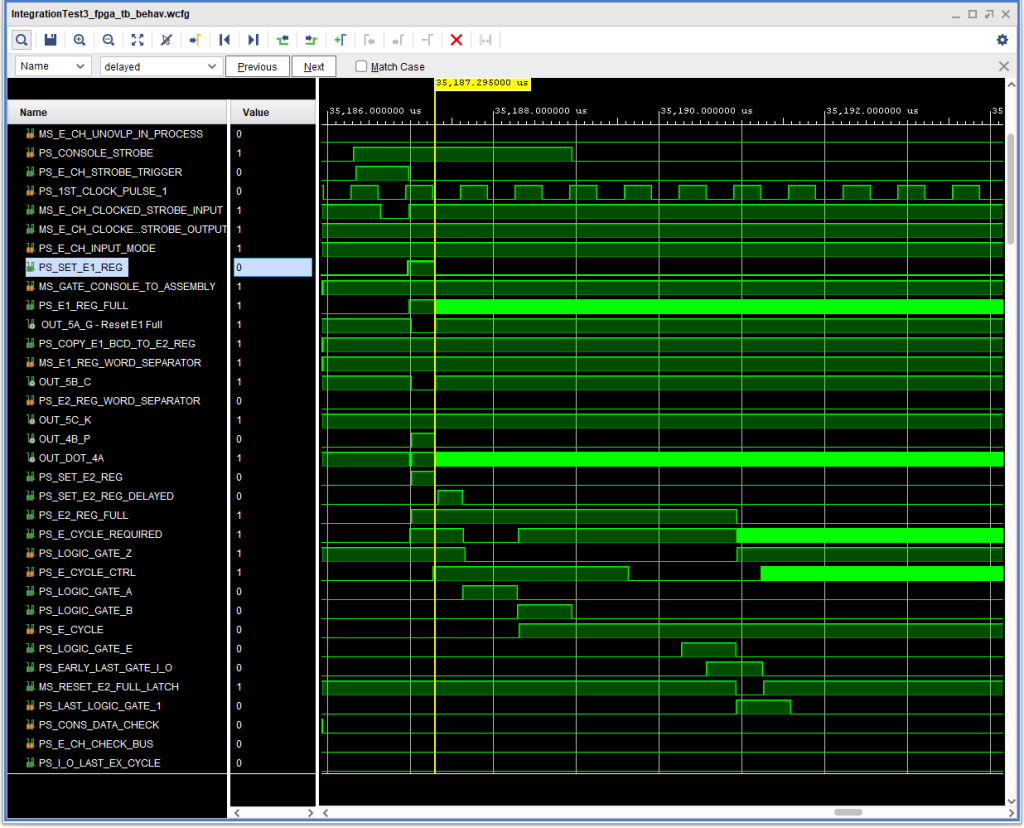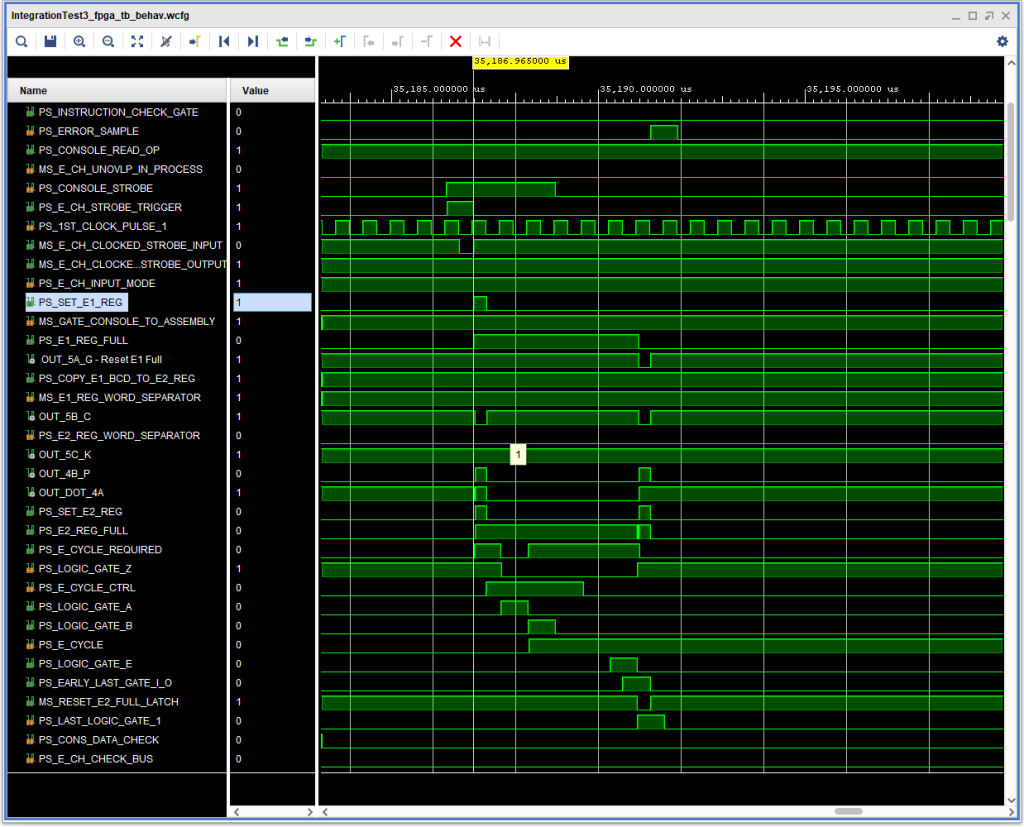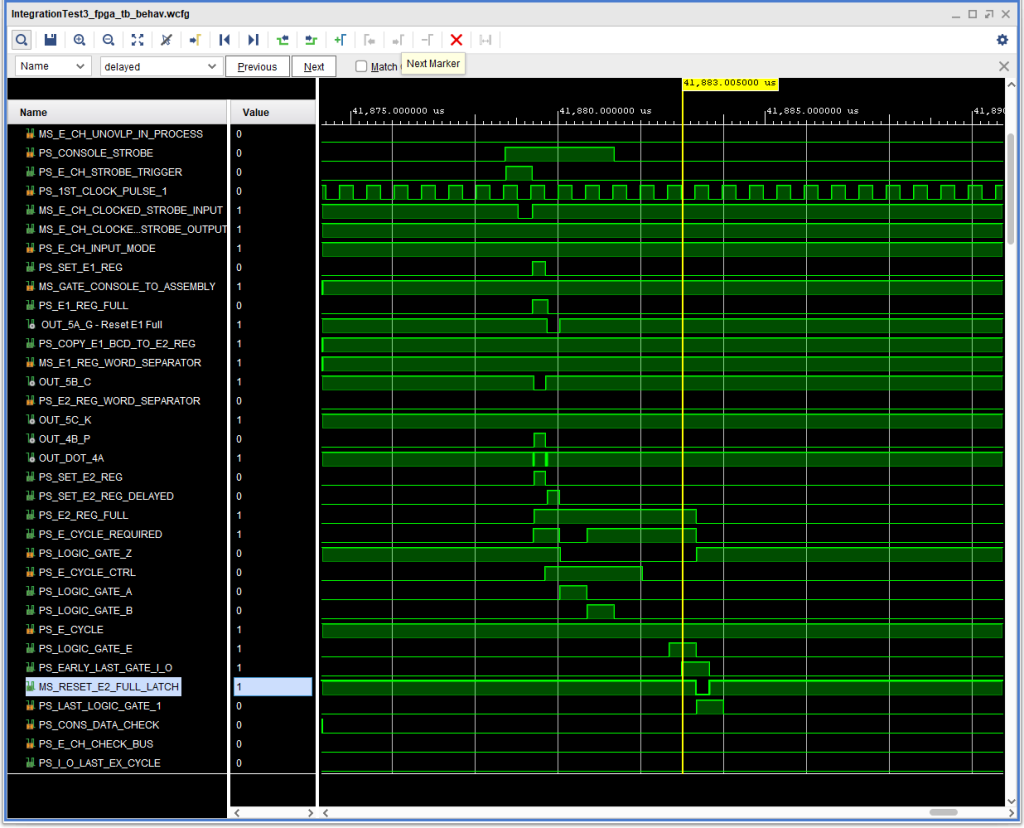As mentioned in the previous post, during testing of the 1401 compatibility of the IBM 1410 I discovered that console input was not working properly for the machine in either 1410 or 1401 mode. The 1411 CPU would accept the characters, but only the first was entered into storage (if that), and pressing Inquiry Release or Inquiry Cancel did not terminate the I/O operation. After some trial and error signal examination, I discovered that the E1 Register Full latch was “oscillating”, and the cause seemed to be a simultaneous set and reset signals.
In the original hardware, this was unlikely to occur, given multiple layers of logic gates, signal travel times on the backplane wiring, and so on. But in a simulation, or in an FPGA the combinatorial logic signals are implemented using look up tables (LUTs) making instantaneously simultaneous combinatorial signals a likely possibility.

So, how to prevent that? The first, more or less obvious thing, was to condition one or both of the set and reset signals to give one or the other priority. I found that if I gave the reset signal priority (by inhibiting set when reset was active) that console output was negatively affected, because this change affected both input and output.
However, if I added an inhibit from the set signal to the logic block at 5A, so that set for just input had priority, the problem went away – I could type characters into the console and they were properly entered into memory.
But I also noticed that doing the fix that way I ended up with second pulse of +S SET E2 REG during the cycle. While this didn’t seem to cause any real problems, I was nervous about possible future effects. In addition, it left the E1 FULL signal active for longer than it needed to be.

While looking at ALD page 15.62.04.1, which generates signal +S SET E2 REG, I noticed another signal, delayed by 1 IBM 1410 clock pulse, +S SET E2 REG DELAYED. Feeding that into the logic block 5A on ALD page 15.41.10.1 instead of +S SET E2 REG allowed an earlier reset of the E1 REG FULL latch to the time where it really should be happening, and prevented the extra +S SET E2 REG pulse from occurring.

I am a little concerned about the +S E CYCLE REQUIRED being inactive during Logic Gate A, but it doesn’t seem to be causing any problems so far.
However, there is still one remaining issue with console input. If I enter more characters than are allocated in the buffer (terminated by a Group Mark with a Word Mark), the M%T0xxxxxR instruction ends normally. But if I enter fewer characters or the exact number of characters expected, the instruction ends with an Instruction Check, I think because I CYCLE CTRL and E CH UNOVERLAP IN PROCESS are both active at the same time. In the CE instructional text manuals, this check is not present in the logic, however in the ILDs it is present. The question is whether the test should not be implemented the way it is (perhaps by adding some signal to the logic), or if it is just an inopportune appearance of a Error Sample pulse at that time.
